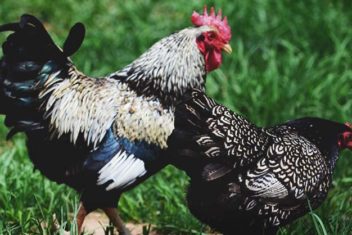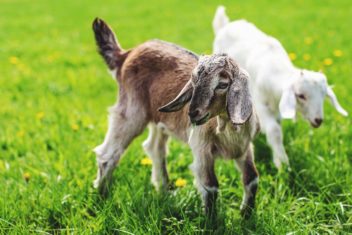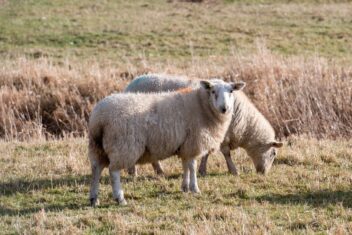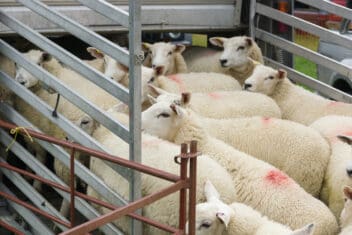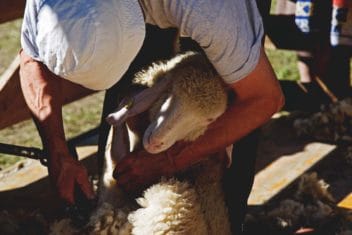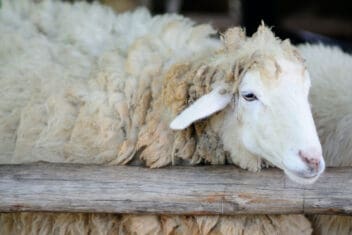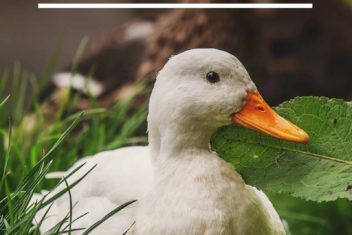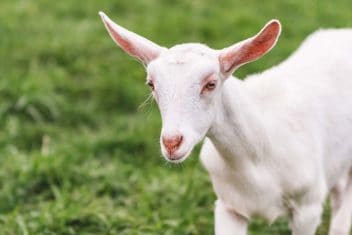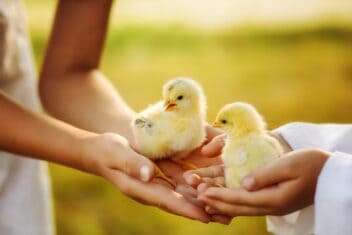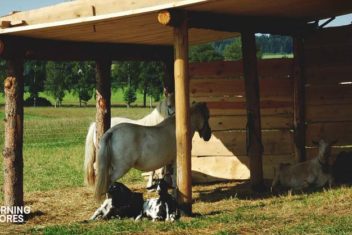Livestock hybrids are a fascinating and often unfamiliar aspect of homesteading. Some hybrids, like mules, are so common that we often forget they’re hybrids altogether. Others like the sheep-goat hybrid are extremely rare.
Several of the hybrids on this list are totally worth keeping around, while a few of them aren’t as hardy as the parent species. This guide will help you understand which are fantastic and which you should avoid on your homestead.
What are Livestock Hybrids?
My sheep and goats spend most of the year together. They forage in the woods and share a pasture. In the fall and early winter though, we separate the sheep from the goats.
At first, we kept them all together in a big shed, but my buck started taking an interest in the ewes. Both our buck and our ram are friendly boys. They usually share space without an issue – but once the buck started pursuing sheep, everything got tense.
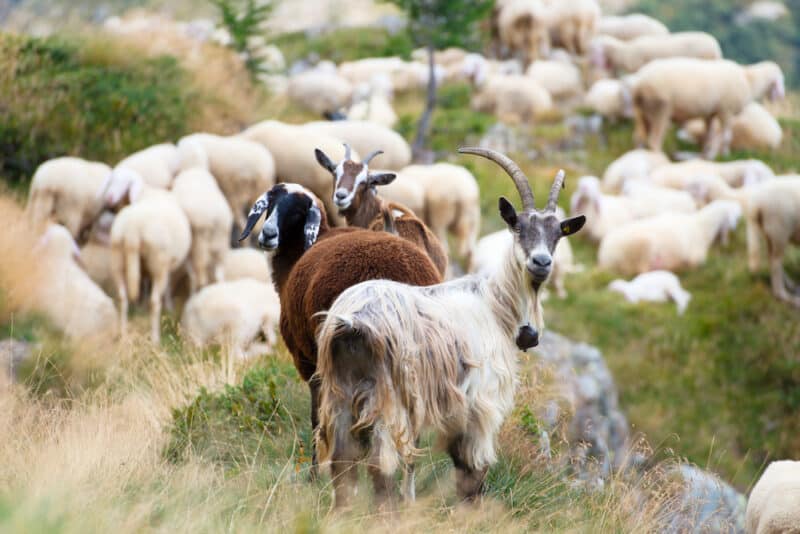
We separated our livestock and enjoyed a peaceful winter, but I started to wonder – can sheep mate successfully with goats? Should I be concerned about my guinea flock mingling with my chickens? What about the ducks and geese?
Depending on the situation, the term hybrid can mean a couple of different things. For some homesteaders, a hybrid is just a cross between two breeds within the same species. Crossing barred rock chickens with buff Orpingtons to create a ‘barred Orpington’ hybrid, for instance.
But this isn’t the correct use of the word. Technically, a hybrid is a cross between two different species.
Livestock hybrids like mules, hinnies, beefalo, and others combine the genetics of different species in the hope of producing offspring with the best traits of both. Here in northern New England, we have an example of natural hybrids in our coyote population.
Eastern coyotes are often wolf-coyote hybrids. They’re larger, stronger, and more pack-oriented than western coyotes. But they’re more adaptable than wolves.
Homesteaders working with livestock hybrids are hoping to accomplish a similar blending of strengths through intentional inter-breeding. Livestock hybrids aren’t always successful, but some have been. Let’s take a look at some examples of those successful hybrids!
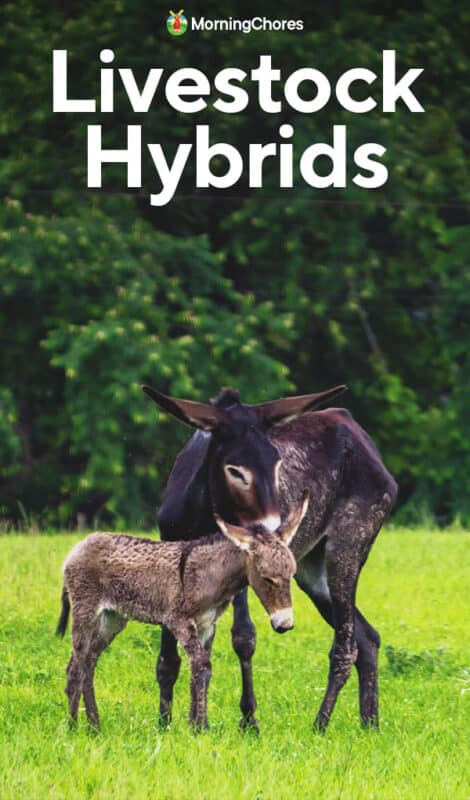
1. Beefalo (Cattle-American Bison Hybrid)
Beefalo are one of the most successful livestock hybrids. Almost as soon as European settlers brought cattle over, they started to notice occasional crossbreeding. Cattle (Bos taurus) and American bison (Bison bison) – aka buffalo – are closely related. They can and will mate in the wild with no help from humans.
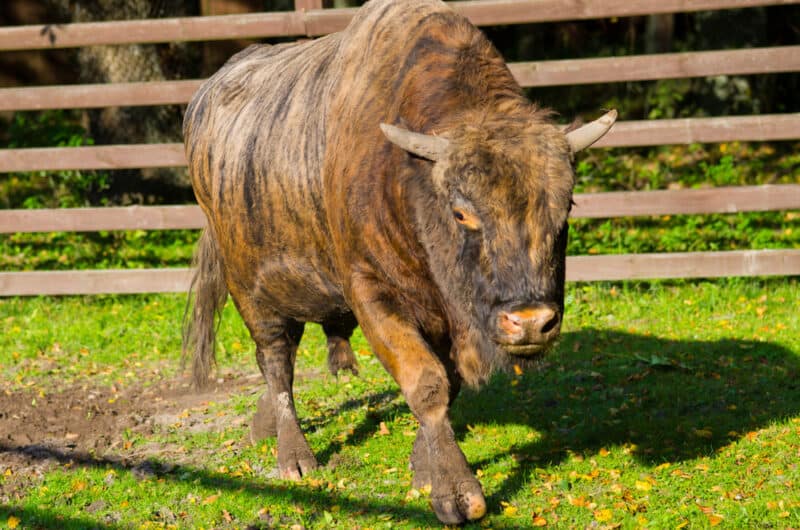
But beefalo didn’t become an intentional part of ranching until the 19th century. A Kansas rancher lost most of his herd in a bitter, winter blizzard. He started intentionally producing beefalo (which he call cattleo) to create a more winter hardy herd.
They gained popularity in the 1970s as ranchers started pursuing the beef-bison cross. Their intention was to raise beefalo for meat, and for at least a decade it worked. Beefalo meat maintained a beefy flavor, but with the leaner quality of bison meat. While beefalo meat isn’t as popular as it used to be, you can still find it in upscale groceries and restaurants.
Because beefalo hybrids are fertile, healthy, and functional, they’re one of the most successful and easy to raise hybrids.
2. Geep (Sheep-Goat Hybrid)
This hybrid is much less successful than beefalo. Sheep and goats look like they have a lot more in common than they do. But despite looking similar and often being kept together, sheep and goats are different animals.
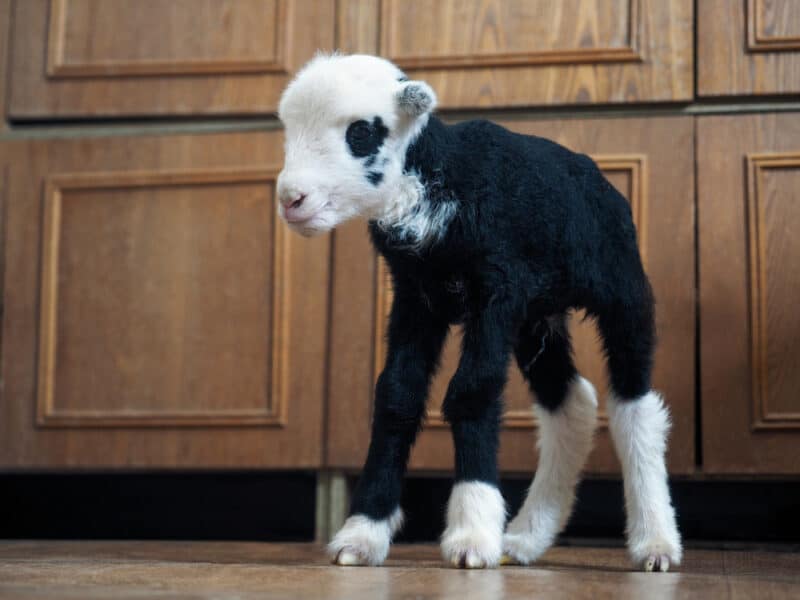
Sheep and goats belong to different genera (Ovis and Capra) but the same sub-family (Caprinae). That means that they have more differences than animals that are just different species but belong to the same genus like horses and donkeys.
Sheep and goats have different number of chromosomes. Sheep have 54 chromosomes and goats have 60.
They can mate, though. In fact, a lonely buck will happily seek out the affections of local ewes. But their mating is rarely fertile. Geep kids are usually miscarried or stillborn. Only rarely will a geep live to be born and grow up. These geep tend to have 57 chromosomes.
There’s a young geep in Germany named Lisa. Geep that live are almost always sterile, though there was a fertile female geep born in New Zealand.
3. Mules & Hinnies (Horse-Donkey Hybrids)
Mules are such a consistent part of the rural landscape that we tend to think of them as a breed of their own. Horse-donkey hybrids have a great reputation as strong, healthy, hard-working, and low-maintenance animals.
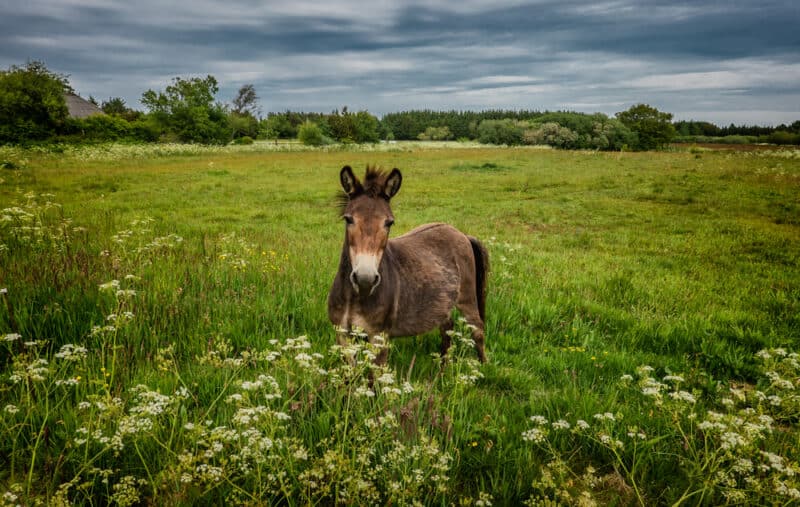
Mules (the offspring of a male donkey and a female horse) and hinnies (the offspring of a male horse and female donkey) do have some differences of their own, as well.
Mules tend to be taller and heavier than hinnies. They often have a more horsey appearance, while hinnies take after the donkey side of the family. Hinnies are often easier to train, with a less stubbornly intelligent nature.
Every animal is different, of course, and both mules and hinnies have been valuable members of family homesteads for centuries
Female mules and hinnies can be fertile, though most of the time horse-donkey hybrids are sterile. Like sheep and goats, horses and donkeys have a different number of chromosomes. But both species belong to the same genus: Equus.
No male mules or hinnies have ever been known to produce offspring. But, occasionally, a fertile female mule has been bred to a horse or donkey and given birth to a fertile male hybrid.
4. Yakalo (Yak-Bison Hybrids)
Yakalo haven’t really caught on in North American hybrid circles. This is a unique cross between yaks (Bos grunniens) and American bison. They were created in the early 20th century in an effort to raise a new meat animal.
Unfortunately, unlike beefalo, yakalo aren’t a consistently fertile hybrid. Yakalo aren’t as hardy as beefalo or either of the parent species.
But they are beautiful animals. Yakalo look a lot like American bison. They’re huge, graceful creatures and they produce quality meat.
5. Iron Age Pigs (Domestic Pig-Wild Boar Hybrids)
This fascinating hybrid is a combination of two closely related species. Domestic pigs (Sus domesticus) and wild boars (Sus scrofa) are similar in many ways, but they are different species. The hybrid, Iron Age Pigs, look like the wild pigs painted in cave art throughout the world.
Though iron age pigs were bred to recreate the look of prehistoric pigs, they’re now popular meat animals. Iron age pig meat resembles wild boar in flavor. It’s become hugely popular at specialty groceries and restaurants.
These hybrids are usually healthy and fertile, but they do tend to be more aggressive than domesticated pigs.
6. Dzo (Yak-Cattle Hybrid)
Dzo (male) and dzomo (female) are yak and cattle hybrids that were bred as pack animals in Mongolia and Tibet. Dzomo are fertile, while dzo are sterile. This hybrid is incredibly hardy.

They’re larger and stronger than either parent species. They can survive had higher altitudes and lower temperatures than yaks, which is why dzo are often used to haul gear for mountain climbers.
7. Poultry Crosses
What about all the barnyard fowl? Can any of them create hybrid livestock? If you’ve ever seen your drake chase after the chickens, you’ve probably wondered about the results.
Drakes (male ducks) will occasionally try to mate with hens, but the results are usually disastrous. Waterfowl have different reproductive organs than land fowl and a drake can cause severe damage to any hens who catch his eye.
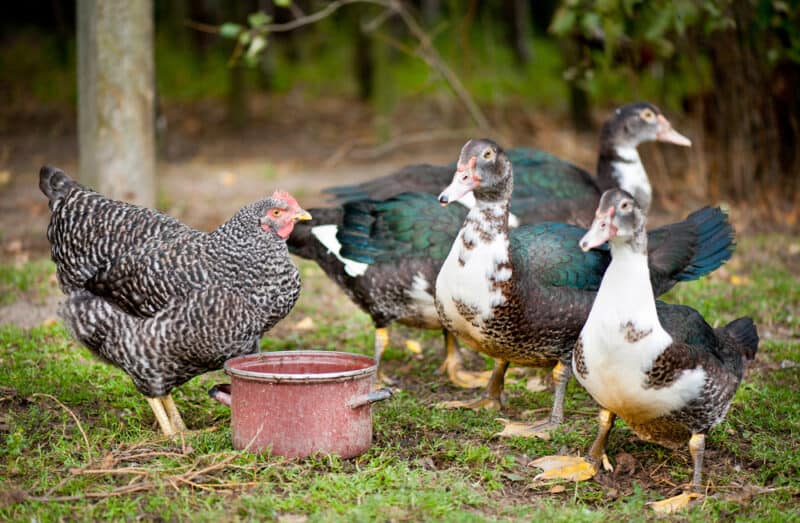
Most of the time, you don’t have to worry. A drake with his own flock of ducks around him isn’t going to have a wandering eye. Tom turkeys, on the other hand, can become a problem for chickens. They can’t reproduce with chickens, but that doesn’t stop them from pursuing the hens.
Most poultry can’t produce hybrids. Geese, ducks, and swans aren’t compatible genetically and – as far as we know – they have never produced hybrid offspring. Turkeys and chickens are also not compatible. Turkeys attempting to mate with hens tend to leave the chickens damaged, sometimes fatally.
Keep an eye on your poultry to avoid any potential complications if you have a mixed flock.
8. Chicken Hybrids
Chickens can produce hybrid offspring with a few species, adding to your homestead livestock. There cases of guinea-chicken and pheasant-chicken hybrids. Despite rumors to the contrary, there are no cases of peacock-chicken hybrids.
Guinea-Chickens
Guinea-chicken hybrids look similar to guineas, but with slightly less alien-like features. They’re infertile and generally less healthy than either parent species. Unfortunately, guinea-chicken hybrids tend to die young from arthritis or heart problems.
Pheasant-Chickens
Chickens can produce hybrids with pheasants. These crosses are beautiful birds. They don’t look much like chickens or pheasants, but they’re glorious little birds. Unfortunately, like guinea hybrids, they tend to be unhealthy and weak. When pheasant-chicken hybrids do live, they’re always sterile.
Chicken hybrids will rarely hatch. Out of 100 eggs, you might get one egg that hatches. After hatching, there is only a fifty/fifty chance that the chick will survive to adulthood. They’re always sterile and often weak. But if you’re raising a mixed flock of chickens, guineas, and/or pheasants, you may end up with a hybrid at some point.
9. Turkey Hybrids
Turkeys can’t mate with chickens, but they can mate with pheasants and peafowl. Like chicken hybrids, turkey hybrids have a high mortality rate. They’re sterile and often weak.
But when turkey-pheasant and turkey-peafowl hybrids do survive, they’re fascinating birds that stand out from the flock. While this probably isn’t a livestock hybrid worth breeding intentionally, an accidental one can be fun to have around.

